Associated words: artistic, innovative, imaginative, original.
What is creativity?
I have learned that creativity can be synonymous with certain words and not others. Society assumes creativity is closely associated with having the "artistic" gene, meaning you can draw and paint or sing and dance. However, creativity is not solely claimed by those who can physically express their ideas through artistic means, but can be equally shared by all individuals who simply allow themselves to openly think and be vulnerable.
The notion of pondering and consideration.
What is curiosity?
Curiosity is a driving force in human and societal development. The presence of curiosity has propelled man kind from its primitive state into the current high-tech state of today. How else do you explain man's first discovery of fire than the simple curiosity behind the men that drove them to experiment. As stated by Celeste Kidd and Benjamin Hayden in an article published by the US National Library of Medicine, "Curiosity is such a basic component of our natures that we are nearly oblivious to its pervasiveness in our lives." In agreement with Kidd and Hayden, it is extremely prevalent how much curiosity drives our society; for, human kind continues to evolve with new waves of curiosity taking our species to new heights with new technological developments and others.
https://www.ncbi.nlm.nih.gov/pmc/articles/PMC4635443/
A thought process involving creative ideas generated by exploring a variety of possible solutions.
What is divergent thinking?
Divergent thinking is the first step in the creative process. The divergence from the straight-forward and easy answer leads to creativity, as we conceptualize new and different solutions to problems we encounter.

Something we all fear.
What is failure?
Failure is something that holds a majority of the population back from participating and doing things they would otherwise enjoy. Failure in the workplace takes its form in idea making and performance results. As employees, looking to shine above the rest, wish to be the go to for an idea for the best new thing or to solve an unsolvable problem. Additionally, we fear failure in the form of performance, as in we are unable to meet others expectations. These irrational fears prevent us from truly succeeding as we disregard ideas that could be great if executed in fear that they may not work out. We must erase the stigma that accompanies failure, that being one of rejection and consequences. failure blooms success in the end and failure must be encouraged in order to succeed.
More than one interpretation.
What is ambiguity?
ESP 103 is a class found upon the basis of leaving everything up to individual interpretation and expression. I have learned that to survive this class, one must be accepting of the fact that there is no "right" answer in this class and that instructions for assignments and activities are ambiguous on purpose, in order to let us, students, form our own unbiased and original ideas.
The process of forming creative ideas.
What is having an open mind?
Being open minded has allowed me to think outside of my comfort zone and act on my ideas without hesitation due to vulnerability. With this approach I have been more courageous and excited in executing assignments in ESP 103. In addition to resources provided by the course, I discovered the TED Talk titled, "Want to be creative? Go for a walk", by Marily Oppezzo; she discusses how simply going for a walk can get your creative juices flowing, so for many of my submissions I thought it a good idea to do something I would not normally do (like go for a walk) to get some inspiration.
https://www.ted.com/talks/marily_oppezzo_want_to_be_more_creative_go_for_a_walk
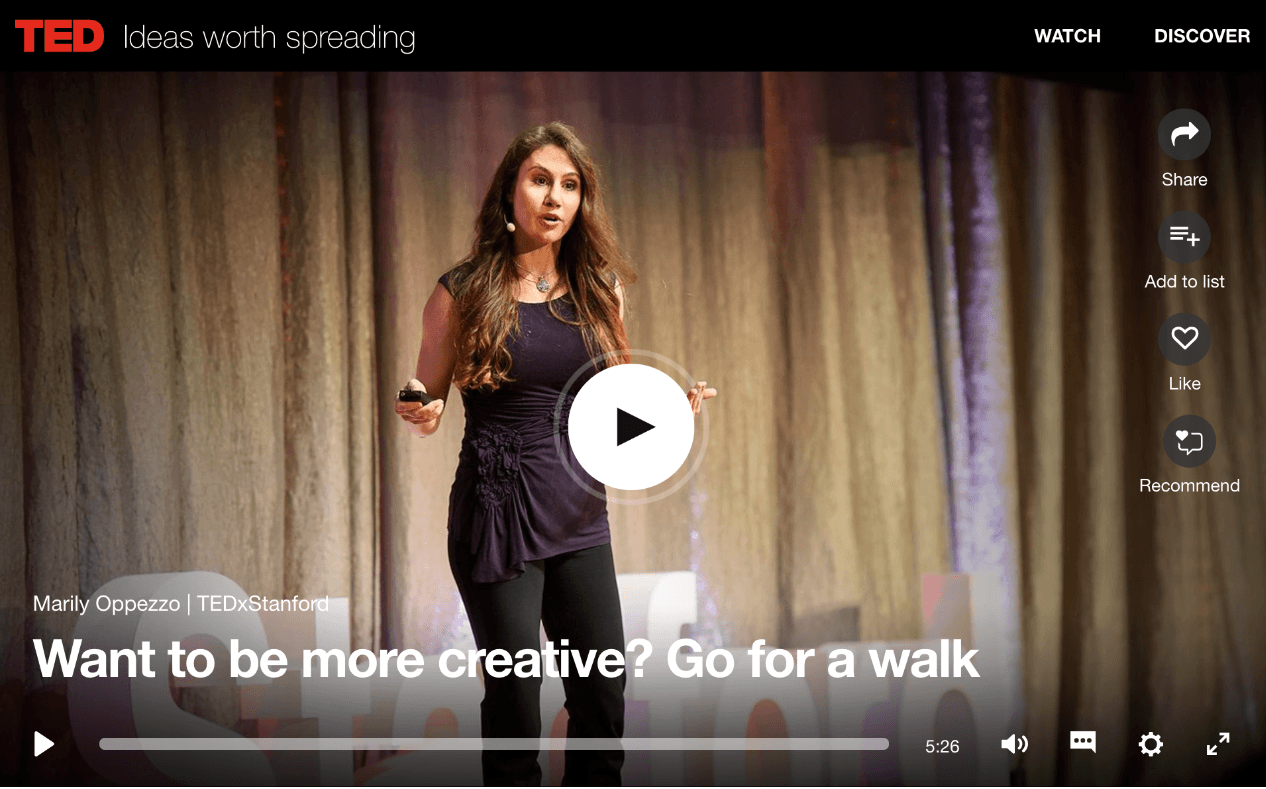
A second right answer.
What is the link between curiosity and creativity?
The linkage between these two concepts stems from the thought that curiosity leads people to think past the obvious answer to a problem and look to a more adventurous approach. Coupled with curiosity leading the way, creativity is added into the mix in order to find a solution one would not normally revert to. These concepts induce new flows of thought and open up new perspectives for future decision making.
The process of creativity.
What is the Creative Diamond?
The Creative Diamond is a step-by-step process and visual explanation for what the mind goes through as it attempts to think creatively.
The left top side of the diamond represents the beginning of the creative process as the divergence step, where you seek quantity in terms of ideas that can take you in a multitude of directions. Following that side of the diamond, you fall down into an area that contains ideas you come up with one you have run out of ideas, these are your most unique. The middle top of the diamond is referred to as the "Area of Familiarity", which holds our initial ideas, the easy ones. The top right side of the diamond is where you enter into the "Area of Discovery", where we seek novelty and originality in our ideas. Again after this area, the bottom half of this side of the diamond holds the area where unique ideas emerge from exhaustion of every other possibility, with both bottom halves meeting in the middle.
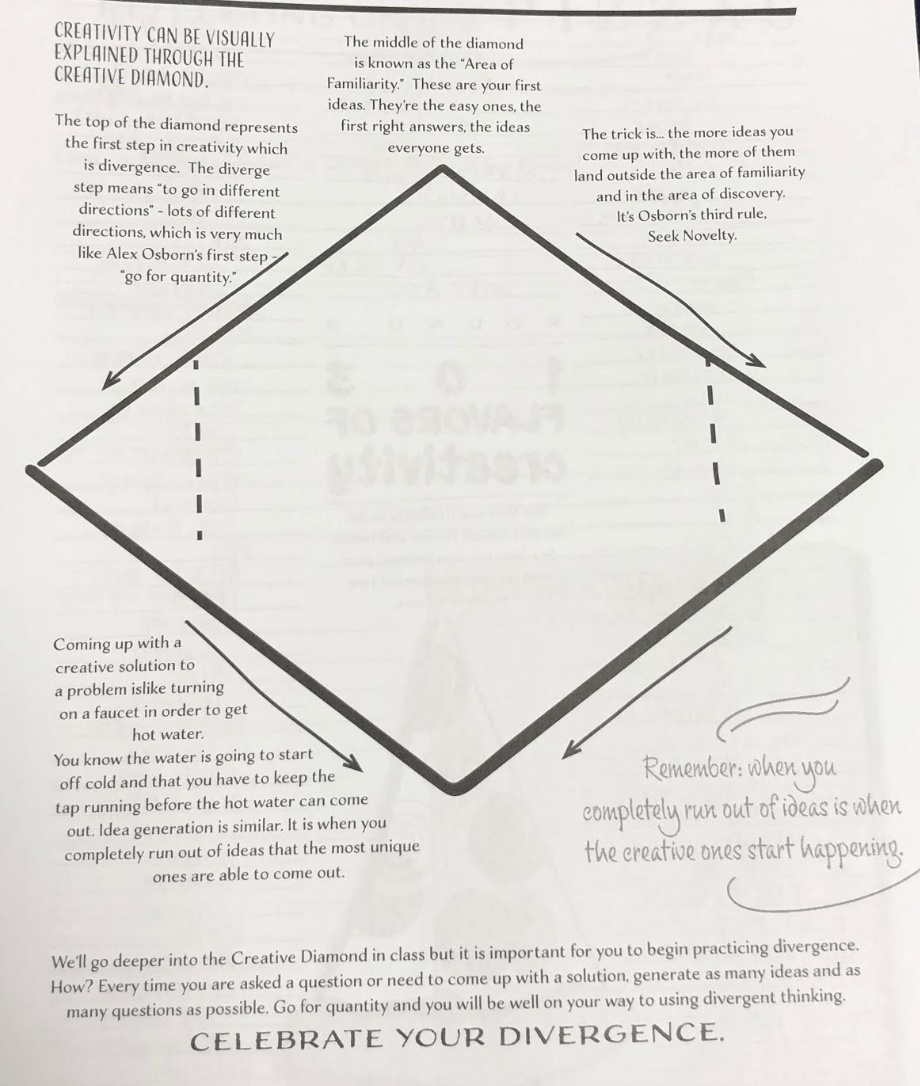
Shame, personal embarrassment, criticism, looking stupid/talentless/bad/
What is synonymous with failure?
All the side effects that follow a failure incite fear amongst many and in turn discourage creative thinking and curiosity.

"Hey, it's crazy out there."
What is VUCA?
VUCA is an acronym in the business world standing for Volatile, Uncertain, Complex, and Ambiguous.
Nothing spectacular is created the first time around, one must have an initial idea and improve upon it through further evaluation and experimentation. In the workplace your boss will not tell you how to do something, he will just simply give you the task you must complete with some vague instructions and a deadline. In order to adapt to the workplace environment we must learn early on how to interpret and act on it.
A creative person.
Trick question - there is no one correct answer.
ESP 103 has taught me that creativity is expressed in a variety of forms via different individuals. As we all know, "everyone is different", ergo we cannot expect a generic answer to be able to pinpoint an applicable character trait for society as a whole.
A mindless routine.
What is a habit?
In ESP 103 we briefly focused our attention on the nature of habits. Humans fall into habitual patterns unknowingly everyday. We inadvertently move through our lives making decisions and doing things without any real considerations as to why we are performing these seemingly unimportant actions. The mindless takeover of our habitual nature takes away from broadening our horizons and pondering the world around us, by making us stick to what we know and feel comfort in. Personally, I found myself falling into undesirable patterns and made the conscious effort to become more self-aware of my actions and live more presently.
Something you do before you write a paper, start a project, make a decision, etc.
What is brainstorming?
Brainstorming is a set of rules invented by Alex Osborn in the 1950s.
Step 1: Quantity: aim to have multiple ideas you can expound on
Step 2: Avoid Judgement: do not analyze or evaluate your ideas while creating them, just simply write and move on for now
Step 3: Seek Novelty: come up with outrageous ideas, the more unique the better
Step 4: Build off the Ideas of Others: get inspired by others
I, personally, brainstorm before every essay or project I begin, so I was very excited and grateful to learn the true process.
Resiliency and perseverance.
What is a lesson learned from failure?
We can benefit from learning the valuable lessons that are a result of failure. We must learn to appreciate what we can learn from failure as we can put the newfound knowledge into a better second, third, or fourth try.
Allowing the existence, occurrence, or practice of something.
What is tolerance?
There is a three step process into tolerating ambiguity in your life:
Step 1: change your initial beliefs about ambiguity - learn to love ambiguity, embrace it (you essentially cannot be wrong!)
Step 2: when faced with a decision/opportunity, utilize the ambiguity of the situation to rise above the rest and shine
Step 3: acknowledge your fears of choosing the wrong direction to take a situation and continue on with it anyway - embrace failure as a possibility of your actions and use it as a means of improvement
The reason people fear creative expression.
What is the fear of being wrong? What is the fear of being different? What is the fear of living outside our comfort zone?
Essentially, there are many answers as to why people hesitate or avoid creative expression. First, people fear being wrong; one of the many flaws of human nature is our tendency to overestimate our correctness and judgement, thus people prefer to refrain from speaking their mind. Secondly, people fear being socially outcasted by their peers or rejection from others. Lastly, many people, including myself, struggle with stepping outside their comfort zone and making themselves vulnerable to the public. Personally, I have dealt with all three fears as ESP 103 has pushed me in my creative processes more than anything ever before, and has allowed me to overcome my hesitations through my progression of works.
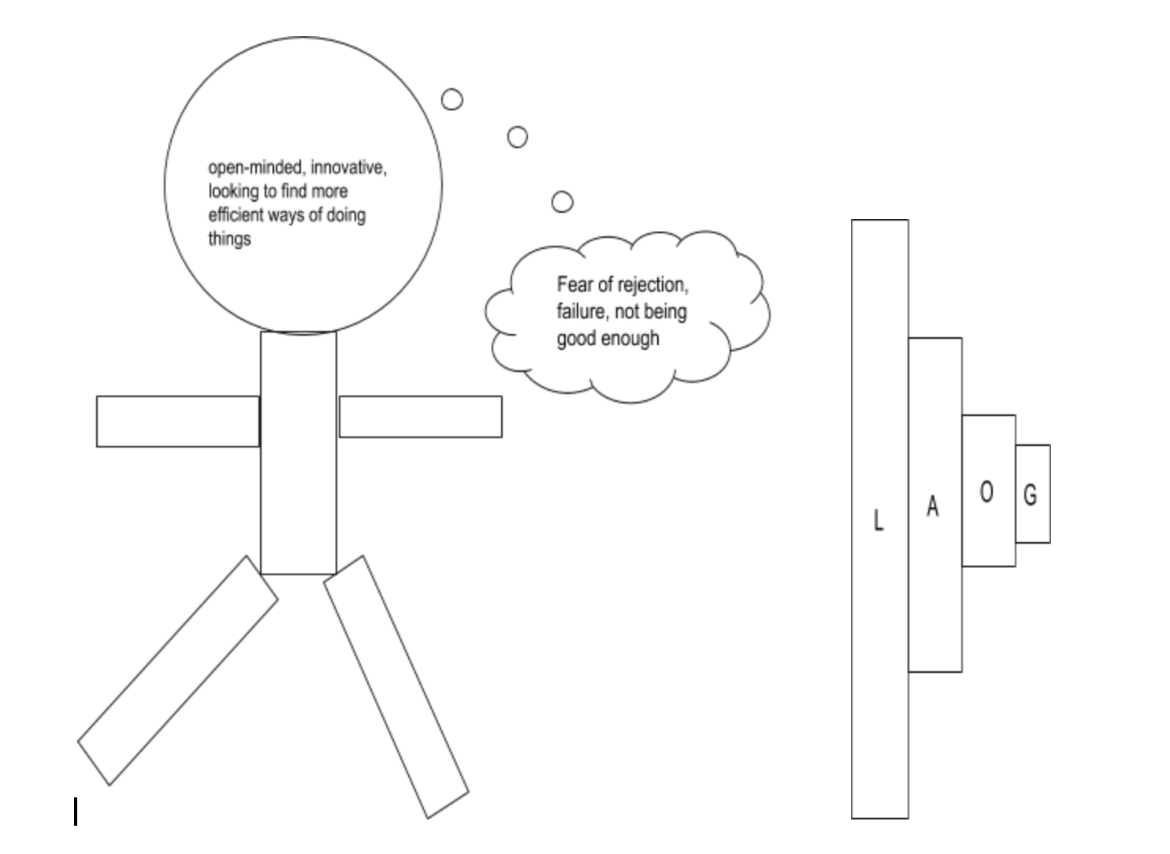 Above is my very first mini project which displays the stereotypical associations of a "creative" person and what thoughts prevent them from achieving their desired goals.
Above is my very first mini project which displays the stereotypical associations of a "creative" person and what thoughts prevent them from achieving their desired goals.
Curiosity killed the cat.
What is a proverb?
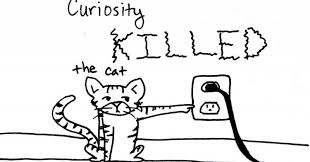
This proverb refers to the warning that being inquisitive about other people's affairs leads to trouble. I believe this saying is, at times, used inappropriately and as a discourager for young people to not approach their lives wondering, "why"?Curiosity is, unfortunately, discouraged in some parts of the world for various groups of individuals, whom are subject to authoritative figures who fear curiosity and what it can inspire/incite. The freedom to be inquisitive is one that everybody should experience and it is somewhat taken for granted by those who freely receive that right and do not capitalize on it.
Results of a longitudinal test on divergent thinking.
What is the notion that divergent thinking decreases with age?
Ken Robinson tells the story of a study in divergent thinking: there was an undeniable trend that showed as we age we lose more and more of our abilities to think divergently. In our kindergarten years, nearly 98% of the study participants scored as divergent thinking geniuses, as 8-10 year olds it fell to 50%, and the numbers continued you to fall as the ages increased.
https://www.youtube.com/watch?v=BHMUXFdBzik
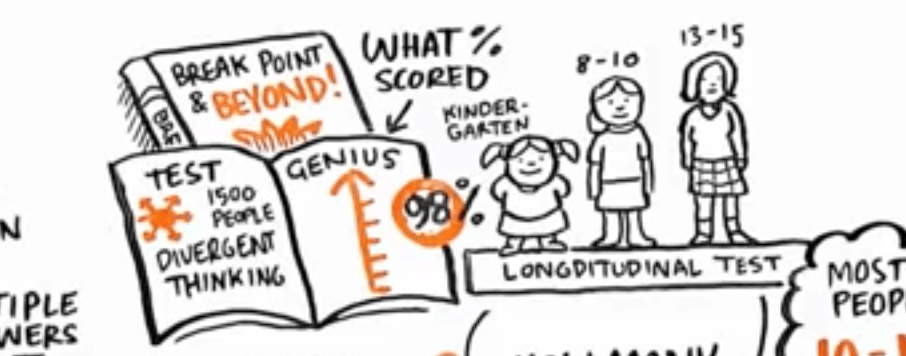
I believe the unfortunate reality of diminishing divergent thoughts occur as we age, for we start to see less of the outrageous and unethical solutions to life's most complex problems.
It is my fault.
What is the Blame Game?
As discussed by Amy Edmondson, a professor at Harvard University, she elaborates on obstacles that prevent us from learning from failure, one specifically being the blame game. Edmondson cites that the blame game continues to remain as a problem most people face is because it has been engrained in our minds from an early age to take responsibility for our actions and it is an emotionally unpleasant experience that we do not want to experience again. This childhood disdain towards failure and being in the wrong resonates with people as we age and only intensifies as the repercussions for being wrong are dramatically more real.
Yet, through the course of ESP 103, I have been able to slightly stray away from the blame game and allow myself to grow from my failures and allow them to help me succeed as I try again and again, until I get it right.
https://hbr.org/2011/04/strategies-for-learning-from-failure
Something that limits creative thinking, that would be otherwise be inspired by through ambiguity.
What is structure?
Structure and guidance can inhibit creativity, curiosity, divergent thinking, and the lessons one can learn from failure from reaching people. According to Henry Doss in Forbes, "If professors surround students with a constant offering of hypothetical solutions to problems and challenges, how will they learn that they are perfectly capable, as innovators, of creating their own solutions?" This quote by Doss is rings true, as students look to authority figures for answers and guidance, but in order to prepare their students for the real world.
The type of creativity used in the business world, the focus of ESP 103.
What is inventive thinking?
The focus of this course has been to stress the branch of creativity that centers around second right answers and problem solving, that is essential to success in the business realm. Business creativity thrives off challenging norms, rebounding from failure, and adapt and seize opportunities.
An expert.
What is a person you go to for the most accurate information for something you are curious about?
When looking for exceptional advice or insight into a topic you are curious about, the best person to look towards is an expert in the field. When assigned the project of Genius Hour, we were tasked with talking to an expert in something we were interested in and learning as much as we could from them. I choose to pick the mind of a practicing attorney, for I have considered law school but need more information before I decide; thus, I thought it appropriate to converse with someone who went through what I might put myself through. In our conversation I inquired about the day-to-day conduct of work-life as an attorney and what that work entails: the highs, the lows, and the in-betweens. Below is the information I reported and intend to look back on when I am ready to make my decision.
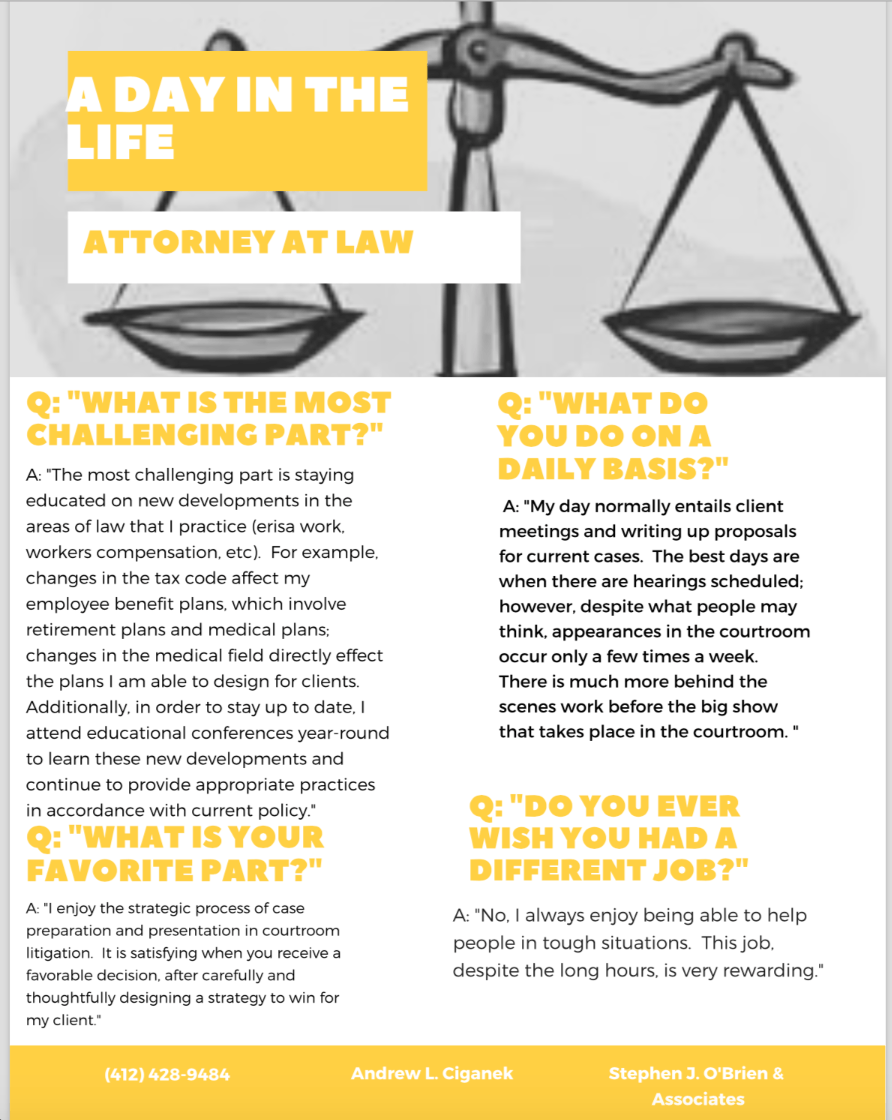
A different way of using an object than what it is meant for.
What is acting out divergent thinking?
When tasked with coming up with 30 new ways to use our phones, I was extremely stumped after 10 ideas, which in retrospect were not that adventurous. When I hit my roadblock, I began to look to others for inspiration, meaning I would observe others actions and think to myself, "How could a phone be inserted into that scenario?" With this thought process occurring in my head, I was then able to come up with some of my own ridiculous uses for my phone that would never normally be possible. Below I compiled my 30 new ideas into a mosaic that forms a picture of my actual phone; I chose to display my ideas in this fashion for I thought it interesting how these new functions of my phone, essentially, compose the very reason for necessity of the device and give it purpose.
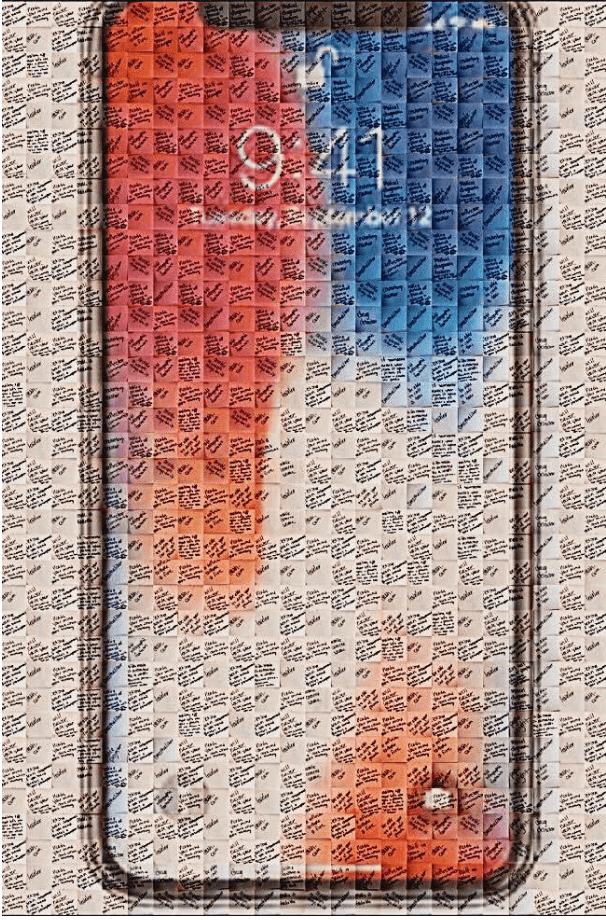
When someone says no.
What is rejection failure?
In our latest mini project we were assigned the task of going on a trade journey to attempt to see how our original trade item may gain us an item of higher value. Throughout my trade journey I strategized in my trade requests and in my initial trade for I wanted to ensure the least amount of rejections as possible, though rejection in its totality is unavoidable. Moreover, I sought out unique and in some way desirable items I knew my peers would be willing to trade something for. Below is my progression. I learned a lot about how to read people and think intuitively in this process to minimize the amount of rejection failure.
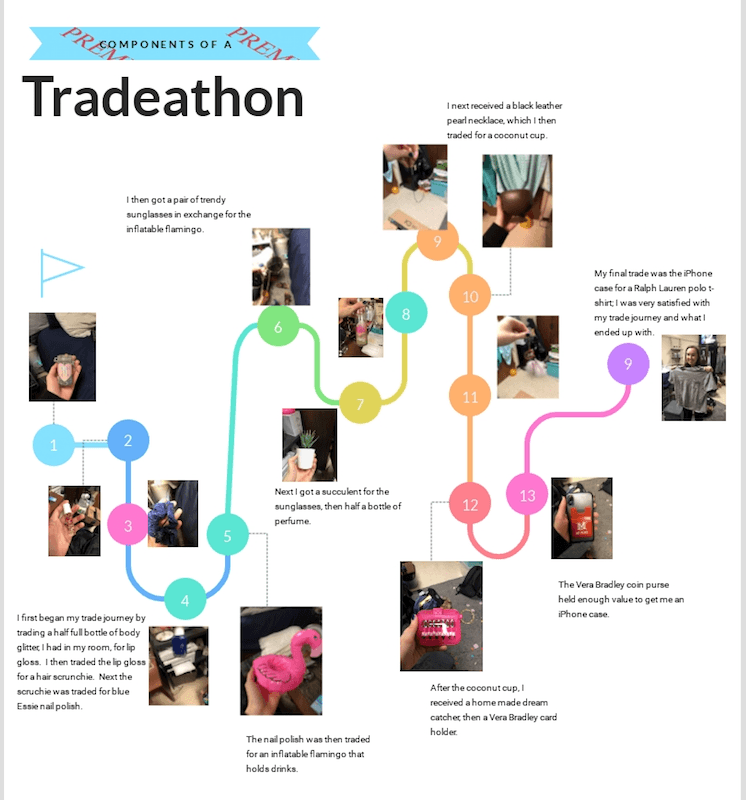
This project.
What is my creative project?
This project encompasses all of the components learned in the course thus far. While completing this assignment I learned how each unit we learned is an expansion on the previous and how they are all linked. These components of the course are connected in part of the mindset we should leave the course with, one that allows us to think creatively through being inquisitive and and using divergent thinking skills to bring us to new levels of ideas, and allowing failure and ambiguity to help spark new inspirations when challenged.